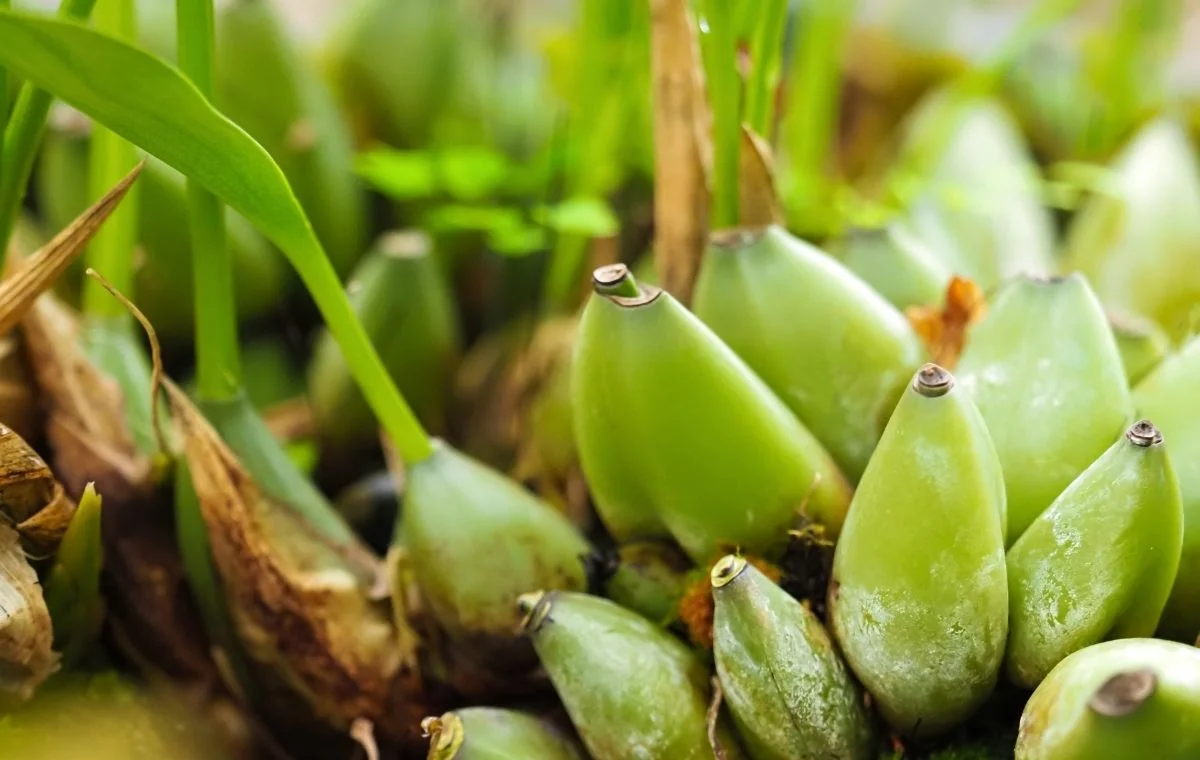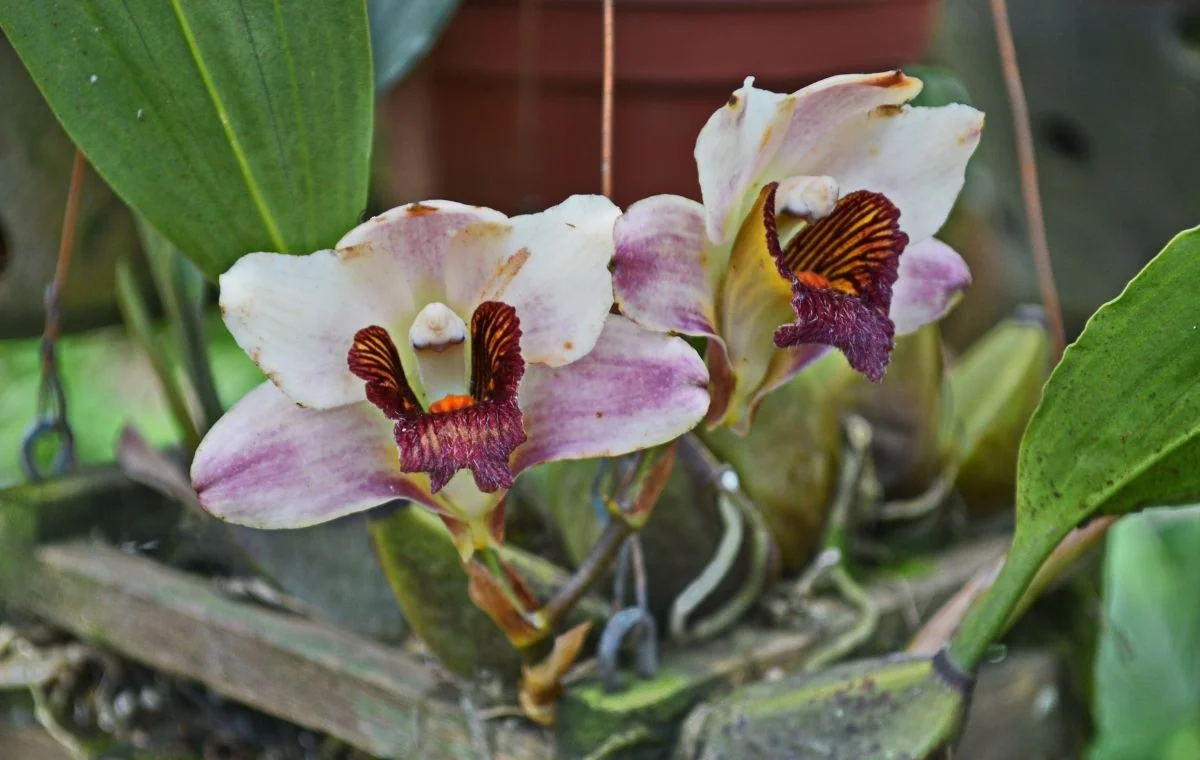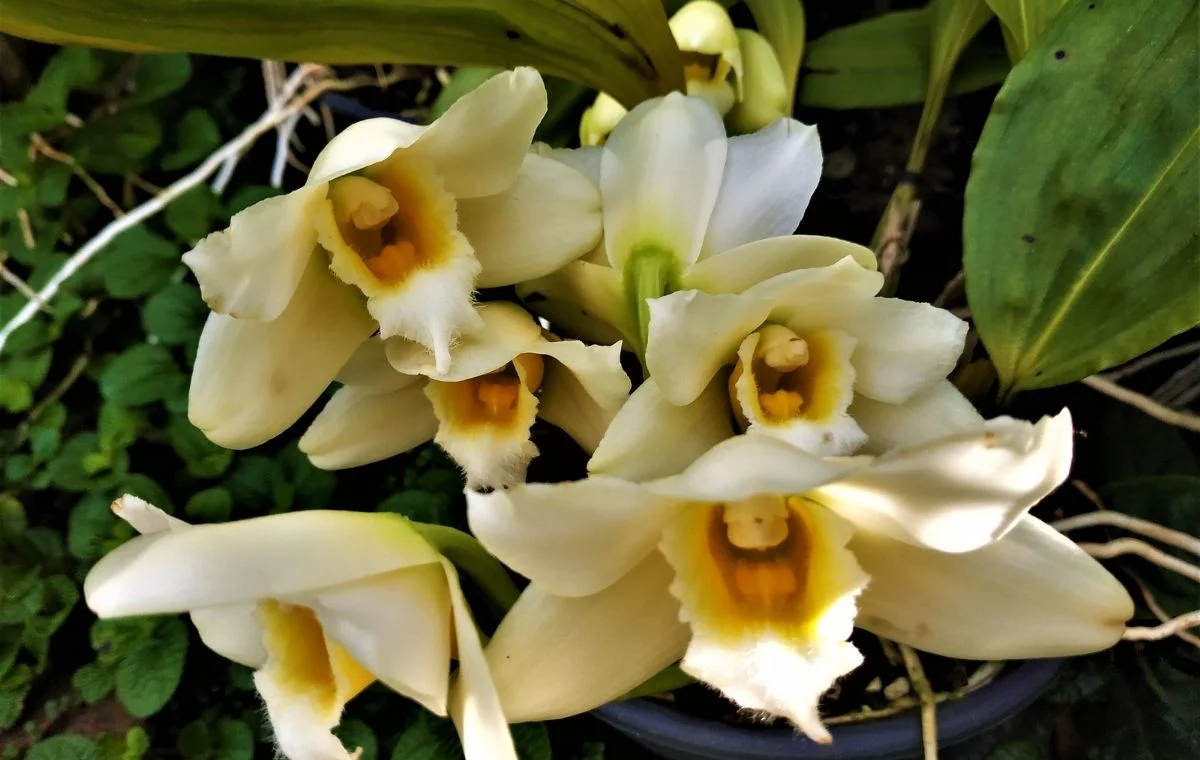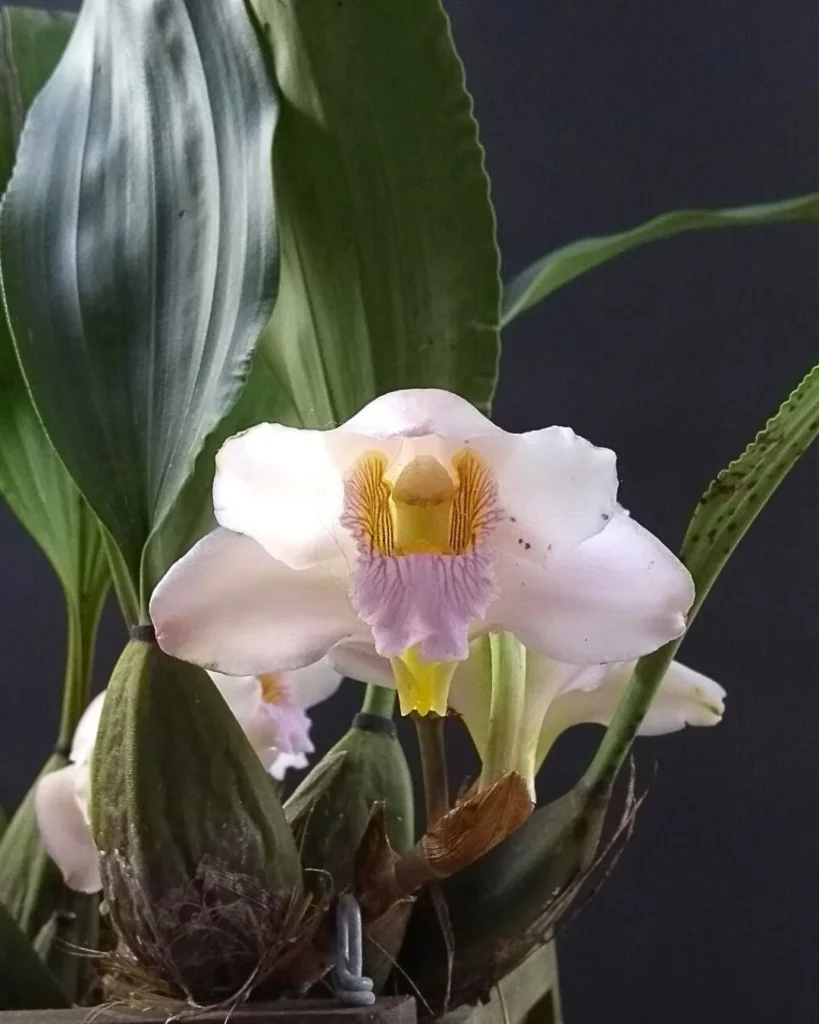The Harrison’s Bifrenaria (Bifrenaria harrisoniae) is a natural orchid, meaning it is not a hybrid or commercial cultivar. It has a sympodial growth habit, is epiphytic, and occasionally lithophytic. This means it primarily grows on tree branches, though it can also be found among rocks. The genus name “Bifrenaria” is derived from Latin, combining Bi, meaning “two”, and Frenum, translating to “brake”. This name alludes to the two callus-like strips that connect the pollinia to the flower’s viscidium. Conversely, the species name “harrisoniae” honors Mrs. Harrison, the wife of Arnold Harrison, a renowned 19th-century orchid collector.
Naturally, B. harrisoniae thrives in the Atlantic Forest and Cerrado biomes, covering an area from southern Bahia to Rio Grande do Sul. It adapts to altitudes ranging from 656 to 3937 feet (200 to 1200 meters) above sea level. This orchid features ovoid to pear-shaped pseudobulbs, deeply grooved, supporting a single, simple, and pleated leaf. During summer, it blooms, revealing a short, bracted, and semi-erect floral stalk displaying 1 to 3 flowers. These flowers, approximately 2.76 inches (7 cm) in diameter, are fragrant and can last from 15 to 20 days.
Its petals range from oval to oblong, while the upper sepal is smaller and concave. Predominantly white, the flowers may also exhibit yellowish or yellow-greenish hues. The trilobed labellum, covered with trichomes, shows colors from pink to red and brown, with dark veining. It is important to note that Bifrenaria harrisoniae can be easily confused with Bifrenaria tyrianthina, found exclusively in Bahia and Minas Gerais. Without knowing the origin, the distinction between them is mainly made by morphological characteristics. The stipe on the flower column of B. tyrianthina is slightly narrower than that of B. harrisoniae, and the spur located at the base of the labellum of B. tyrianthina is longer than that of B. harrisoniae.
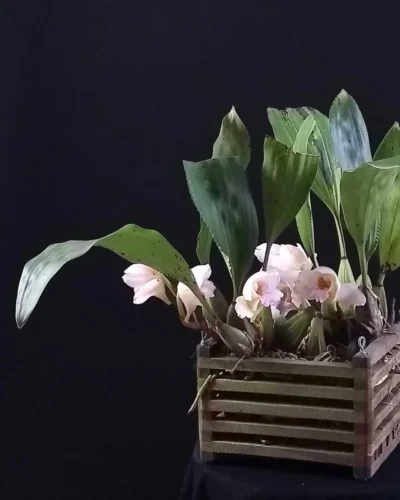
For the ideal cultivation of B. harrisoniae, filtered light or even full sun exposure is recommended, with ideal shading between 40 to 50%. The plant enjoys warmth, preferring temperatures ranging from 32 to 86°F (0 to 30°C). The ideal relative humidity for this species is between 50 to 70%, accompanied by moderate ventilation. It’s worth noting that it does not tolerate frost. Cultivation in baskets is most recommended, as the plant benefits from well-ventilated roots. The substrate used should be specific for epiphytic orchids, capable of retaining the necessary moisture while providing efficient drainage.
As for watering, it’s advised to do it every other day or every two days, always checking if the substrate is dry. During winter, in the plant’s dormant period, it is recommended to reduce the frequency of watering. An effective fertilization suggestion includes the weekly foliar application of a solution containing 0.07 ounces (2 grams, 1 coffee spoon) of Peter’s 20-20-20 NPK fertilizer per quart (liter) of water.
Additionally, organic fertilization of the substrate should be done monthly, using specific orchid fertilizers and applying them on the substrate’s surface. It’s important to avoid fertilization during the dormancy period. Propagation of Bifrenaria harrisoniae is done through division of the plant, ensuring each new offshoot has 4 to 5 healthy pseudobulbs, connected by the rhizome, with intact roots and a new growth shoot. Lastly, unnecessary division of the plant should be avoided to preserve its vitality.
